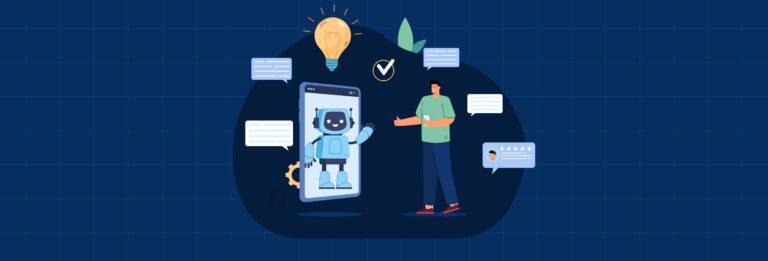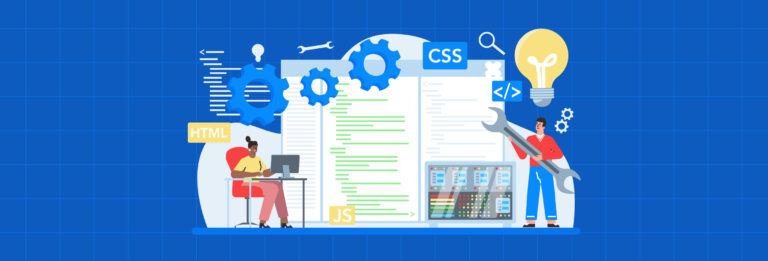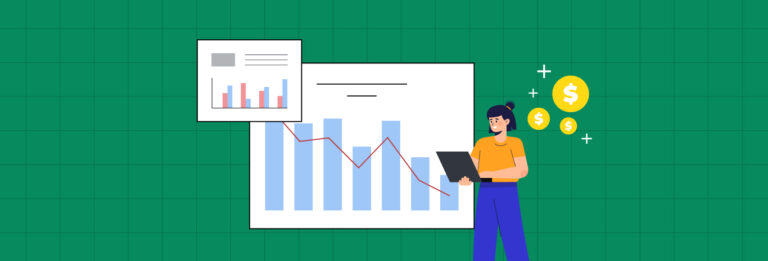Predictive analytics is a form of analytics that uses historical and current data to make predictions about future outcomes and performance. Although this technology has been around for decades, it’s only recently that more and more organizations have started leveraging it to gain a competitive advantage and boost their bottom line — primarily due to the growing volumes of data and availability of easy-to-use software.
Predictive analytics has disrupted various industries, including healthcare, SaaS, finance, and insurance. And when it comes to HR, it has been a total game-changer.
This blog will talk about what predictive HR analytics is, how it works, and the different ways to implement it in your organization.
What is predictive analytics in HR?
Predictive analytics is a technology that HR uses to analyze past and present workforce data for understanding current trends and predicting future outcomes. For example, if the HR team wants to determine the attrition rate for the next two years: they can leverage predictive analytics to identify the future churn rate based on historical data. Using these insights, HR can understand why employees leave the company and work towards retaining them.
Nowadays, various affordable, easy-to-use predictive HR analytics software are available that allow HR professionals to gather insights into the effectiveness of current HR processes and policies and ultimately provide a memorable, personalized employee experience.
While HR data analytics has been around for many years, it primarily focused on what happened in the past and did not provide the opportunity to see what will happen next.
The real-time insights into the future trends can offer a terrific competitive advantage for the organizations and enable them to reduce human error, enhance recruitment processes, reduce churn rate, and encourage optimal work performance.
How to use predictive analytics in the HR landscape
HR possesses large volumes of employee data, such as resumes, job skills, engagement & productivity rate, and preferences, usually managed in a Human Resource Information System (HRIS). Predictive analytics uses this data to forecast the possible outcomes of the candidate or employee at the company. It helps HR teams determine whether or not the candidate is the right fit for the job role and recognize and retain the most skilled employees in the business.
So, instead of relying on gut feelings and past trends, predictive analytics enables HR to rely on data-driven predictive models to forecast the efficiency of employee policies on well-being, engagement, and bottom-line performance.
Best ways to use predictive analytics in HR

Now that you know what predictive analytics is and how it works in the HR space, here are some of the areas where you can successfully deploy predictive analytics in your HR department:
Enhance and accelerate recruitment and hiring
Predictive analytics plays a significant role in recruiting and hiring talent. It increases the effectiveness of your hiring process by reducing the cost per hire and finding talent faster.
Predictive analytics uses and analyzes historical data to predict future hiring strategies and candidates. It helps HR professionals source and attract talent from different countries, make quicker and better offers to candidates, and ultimately, offer an exceptional employee experience.
Predictive analytics in HR uses people data from existing employees, narrows down candidates, and recommends only the best-fit candidates to the recruiter and hiring manager.
Further, predictive analytics can identify the individual characteristics, skills, and type of experience required to succeed in the new job role. This information is used for screening candidates quickly and with more accuracy.
In a nutshell, recruiters get all the data required to improve their hiring decisions while candidates get an engaging and smooth experience.
Improve employee onboarding process
Employee onboarding is a crucial step in the employee lifecycle. If done correctly, it can lay the foundation for the long-term success of the employee and employer and boost engagement and productivity. On the other hand, a mediocre process can impact how they feel about your company and their performance.
HR professionals establish an onboarding process and often forget about its existence — this is a costly mistake. Using employee onboarding surveys can work wonders in knowing the strengths and weaknesses in the process. And the data from these surveys can forecast the candidate’s success in the company. It helps HRs analyze employees’ feedback and identify the strategies that need improvement to reduce future churn rates.
Simplify workforce planning and management
Often, large companies lack knowledge about their workforce and are less likely to succeed in their roles. With access to data about an employee’s skills, experience, aptitudes, and preferences, predictive analytics can reveal which employees are the best match for new roles and any knowledge or skill gaps that need consideration for a good fit.
You can quickly get this information through surveys designed to assess the employees’ skills and aptitude. It can also help HRs tap into the employees looking to change their careers — either in the organization or out of it. Encouraging these employees to apply for the new roles enables them to boost career development without leaving the company.
Predict and reduce attrition risk
It is one of the most popular uses of predictive analytics in HR. HR professionals can use the responses to employee engagement questions — such as for how long do you intend to stay in the organization? — to predict attrition risk. Further, they can derive insights into the candidate’s past performance to forecast when they’re likely to leave the company and take measures to prevent it.
Having said that, predictive analytics focuses on identifying the reason behind the employee’s voluntary departure, what might have stopped them from leaving, and how HRs can use data to predict and reduce attritions and retain top talent.
Determine the reasons for employees’ exit
Recruiting, hiring, and training new employees can go far beyond paying for their salary. It can cost up to $4,000 to hire a new employee, with around 52 days to fill a position. It is where knowing why and when the employee will leave can help.
Predictive analytics dives into the exit data gathered from employee engagement surveys and exit interviews to provide valuable insights into different aspects of the departing employee experience. It alerts HR over the failed processes and how they can improve them to prevent talent from leaving the company.
Anticipate employee absenteeism
Unplanned employee absenteeism is a huge cost driver for any organization. It becomes challenging to manage once it becomes a habit or if it is acceptable to the team. Since you cannot force your employees to show up to work on time, you can forecast when and why your workers will likely take a leave.
HR professionals can leverage predictive analytics to process large volumes of employee data, get a list of employees at a high risk of absenteeism, and take measures to prevent it. For example, predictive HR analytics can help identify the employees at risk of sickness absence and deploy various strategies to increase employee well-being in the workplace.
Predictive analytics also uncovers the reasons behind future absenteeism, such as the lack of a long holiday in the whole year.
Take your employee service game a notch up
Predictive analytics in HR facilitates the HR department to gain insights into the trends for HR case management, such as the type of queries being raised, pain statements of employees, escalations, ticket resolution time, and employees’ feedback on HR business partners.
Predictive analytics in HR also helps HRs identify frequently occurring issues from the employees’ interactions. HRs can spot potential problems/trends easily to make better, data-driven decisions.
How to implement predictive HR analytics successfully

Predictive HR analytics certainly improves your HR strategies. However, if done inappropriately, it can provide wrong past and present information about the employee working in your organization. It can prevent you from predicting future outcomes or, even worse, may show false results. You might end up implementing strategies that downgrade employee experience instead of improving it.
To avoid such situations, follow these steps for effectively implementing predictive analytics throughout your HR department:
Define business objectives
To kickstart the predictive HR analytics in your company, HR professionals must collaborate with their teams to identify the company’s long-term goals. Going forward, your HR teams must formulate questions about their employees that align with these objectives — what we need to measure, what values and events are crucial to predict, and much more.
HRs should also determine the relevant metrics that correlate with achieving these goals. These may include team size, compensation, time since the last promotion, tenure, message and comments in work chats, net promoter score, vacation days used, etc.
Ensure thorough understanding
Predictive HR analytics is a complicated process. It can be challenging for HR professionals unfamiliar with data analytics and data science to comprehend it quickly.
Therefore, providing consistent and diverse learning options to HR team members can help them grasp the new subject, enhance their understanding, and encourage them to develop strategies to boost employee engagement and retention.
If you don’t have enough time or resources, you can hire a data scientist to ensure optimal use of the automation and predictive analytics technology in the HR department.
Address ethical issues
When a company begins to leverage predictive HR analytics, it exposes itself to numerous ethical considerations around the acceptable use of employee data. Further, organizations can intentionally or unintentionally misuse this information and discriminate against people within the organization.
Therefore, the HR team should address these issues to ensure fair treatment of employees. Adhering to the company code of conduct and the HR code of ethics is crucial. When employees receive the same treatment, they feel engaged and motivated to contribute to the company.
Use predictive analytics effectively
HR professionals can leverage the power of predictive analytics based on specific objectives. Once they identify the company objectives, they can gather valuable employee data related to these goals and use predictive analytics to create strategies and achieve them.
For example, HR can use predictive analytics to develop effective career development programs that address the issue of knowledge and skill gaps. These programs allow them to train employees in the desired learning environment.
Is your organization ready to reap the benefits of predictive analytics in the HR landscape?
In today’s business landscape, when the world has moved to digital and people are working remotely, it’s critical to ensure you’re on top of employee trends and not caught unaware.
Predictive analytics is one of the appealing trends in the HR industry. It offers ways to help HR professionals make informed decisions that nurture an engaging and high-performing workforce. Effective use of this technology can enable organizations to identify, hire, engage, and retain top talent who aligns with their culture and are motivated to contribute to its growth.







1 Comment